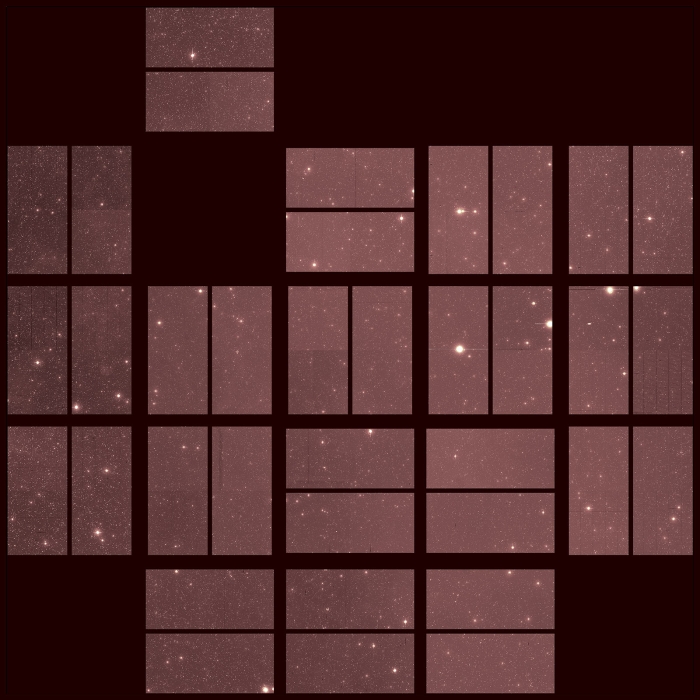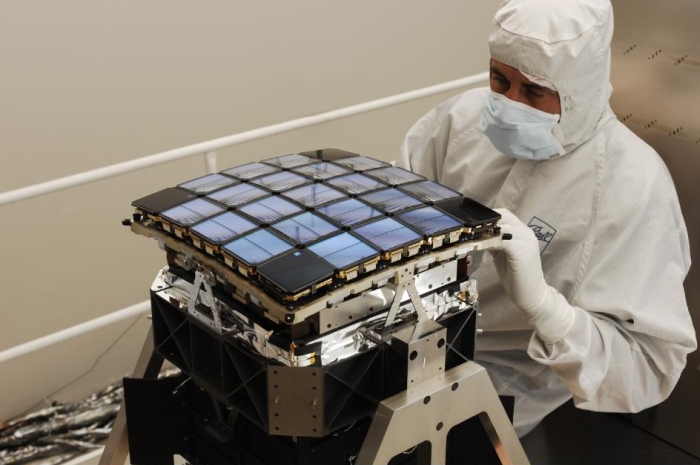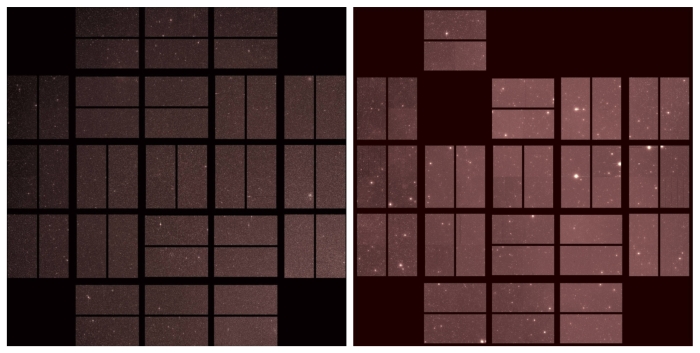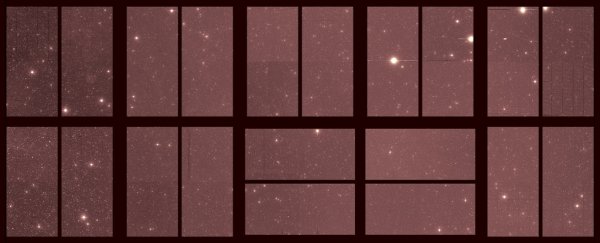On 30 October 2018 Kepler, NASA's planet-hunting space telescope, sent its last signal. It had been on the ropes for years due to failing reaction wheels, but engineers had managed to keep it operational. Then, last year, it finally ran out of fuel.
Its mission had originally been planned for a duration 3.5 years. The telescope ultimately lasted 9 years, 7 months and 23 days, revolutionising our understanding of exoplanets. And it was taking observations right up until the end.
When a telescope takes its very first astronomical image, it's called 'first light'. Kepler's first light image was snapped on 8 April 2009.
The space telescope's final image - its 'last light' - was taken on 25 September 2018.
 Kepler's last light. (NASA/Ames Research Center)
Kepler's last light. (NASA/Ames Research Center)
Kepler's camera was made up of 42 charged coupled device (CCD) image sensors, each with a resolution of 1,024 by 2,200 pixels. You can see a picture of it below - the layout of the CCDs is the reason Kepler's images are arrayed the way they are.
 (NASA and Ball Aerospace)
(NASA and Ball Aerospace)
As you can see in the last light image, there are a few blank squares where the CCDs had failed over the years. You can't just nip into space to repair a telescope, so this had been anticipated with a modular array in which the failure of one sensor wouldn't knock out the whole lot of them.
This means that the last full field of view Kepler saw before it closed its 'eyes' for the last time was still a rich one.
"For this final field of view, Kepler's last observation campaign in its extended mission, the telescope was pointed in the direction of the constellation Aquarius," wrote NASA's Alison Hawkes.
"It caught a glimpse of the renowned TRAPPIST-1 system with its seven rocky planets, at least three of them believed to be temperate worlds. Another target was the GJ 9827 system, a nearby bright star that hosts a planet that is considered an excellent opportunity for follow up observations with other telescopes to study an atmosphere of a faraway world."
 First light (left) and last light, side by side. (NASA/Ames/J. Jenkins)
First light (left) and last light, side by side. (NASA/Ames/J. Jenkins)
The edge of the image also overlapped with observations taken by TESS, Kepler's successor. TESS started officially taking science observations in August 2018, so there was a very brief period of time in which the two telescopes were working simultaneously.
This overlap means scientists here on Earth can compare the two images to try to better understand the data.
That field-of-view wasn't the last thing Kepler saw, though. It also took video of the TRAPPIST-1 system, six-planet star K2-138, and GJ 9827, showing the fluctuations in their brightness. You can see those videos here.
Kepler searched for planets by continually monitoring stars in a fixed field of view, looking for a telltale signature - regular, repeated slight dimming, indicating an orbiting object passing between us and the star. A planet. This is called the transit method, and now TESS has taken up the baton.
But TESS has big reaction wheels to fill. During its years in Earth-trailing orbit around the Sun, Kepler observed 530,506 stars, and identified 2,662 exoplanets. And although Kepler is gone now, it's absolutely not forgotten: astronomers will be using the data it provided for years to come.
Vale, little buddy. To infinity and beyond.
